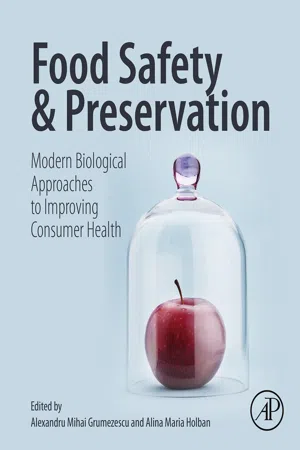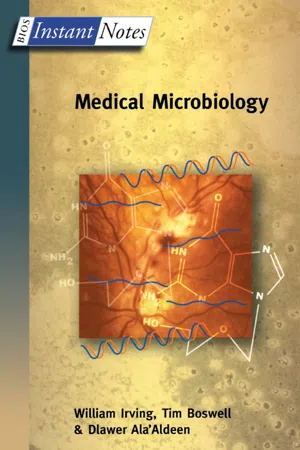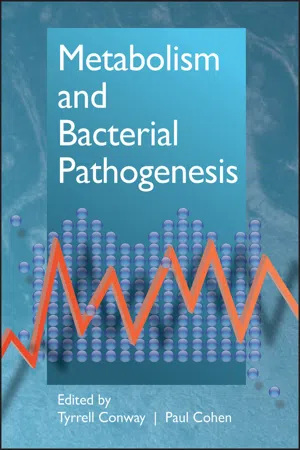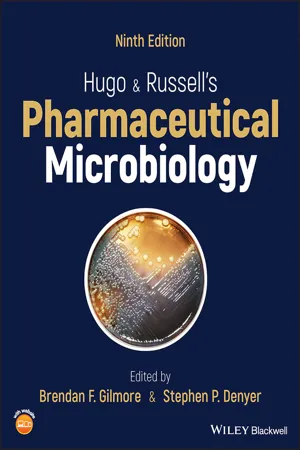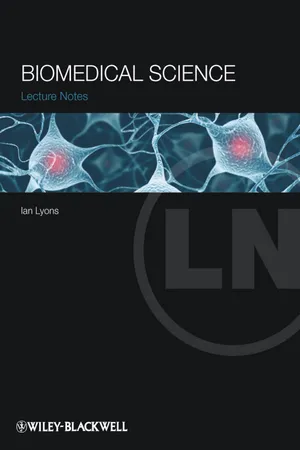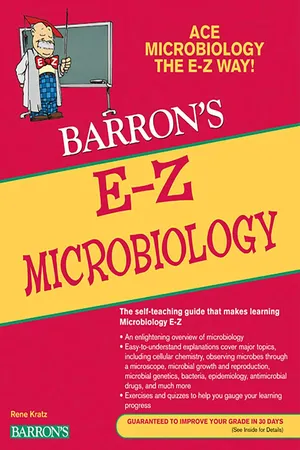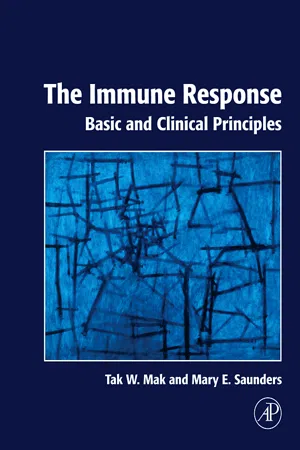Biological Sciences
Opportunistic Pathogens
Opportunistic pathogens are microorganisms that typically do not cause disease in a healthy host but can become pathogenic under certain conditions, such as a weakened immune system or disruption of the normal microbiota. These pathogens take advantage of opportunities presented by the host's compromised defenses to cause infection and disease. Examples include Candida albicans and Pseudomonas aeruginosa.
Written by Perlego with AI-assistance
Related key terms
Related key terms
1 of 4
Related key terms
1 of 3
9 Key excerpts on "Opportunistic Pathogens"
- eBook - ePub
Food Safety and Preservation
Modern Biological Approaches to Improving Consumer Health
- Alexandru Mihai Grumezescu, Alina Maria Holban(Authors)
- 2018(Publication Date)
- Academic Press(Publisher)
Chapter 10 Opportunistic Food-Borne Pathogens Vincenzina Fusco ⁎ ; Hikmate Abriouel † ; Nabil Benomar † ; Jan Kabisch ‡ ; Daniele Chieffi ⁎ ; Gyu-Sung Cho ‡ ; Charles M.A.P. Franz ‡ ⁎ Institute of Sciences of Food Production, National Research Council of Italy (CNR-ISPA), Bari, Italy † University Jaen, Jaén, Spain ‡ Max Rubner-Institute, Kiel, Germany Abstract Opportunistic Pathogens are microbes that usually do not cause disease in healthy people, but may become virulent with immunocompromised and unhealthy individuals. In the past decades, several microorganisms normally occurring in foods have emerged as Opportunistic Pathogens in humans and animals. The situation is being complicated by the emergence of multiply antibiotic-resistant strains of such Opportunistic Pathogens, which in the context of disease makes hospital acquired infections in susceptible hosts difficult to treat. This is the case for lactic acid bacteria species belonging to the genus Enterococcus, as well as for multidrug-resistant enterobacteria. Also, strains of other lactic acid bacterial species, such as Weissella or Lactobacillus species may be Opportunistic Pathogens in immunocompromised or hospitalized persons and cause severe infections. In this chapter, we will provide an overview of the main Opportunistic Pathogens occurring in foods and the most promising strategies to control their occurrence in foods. Keywords Opportunistic Pathogens; Food; Antibiotic resistance; Food-borne transmission; Virulence 10.1 Introduction Opportunistic Pathogens are microorganisms that are usually harmless in healthy, immunocompetent persons but may become virulent in compromised hosts such as the immunocompromised, or people with underlying disease. These microorganisms may cause severe infections or diseases, such as hospital acquired infections, including bloodstream infections, pneumonia, surgical site infections, diarrhea, and urinary tract infections - eBook - ePub
- William Irving, Tim Boswell, Dlawer Ala'Aldeen(Authors)
- 2004(Publication Date)
- Taylor & Francis(Publisher)
The term ‘colonization’ should be restricted to the presence of a microbe at an expected site. A pathogen is a microbe that potentially can cause harm, i.e. tissue damage. An opportunistic pathogen is a microbe that causes infection in patients with impaired immunity, e.g. fungal infections in cancer patients.Introduction
Microbiology is the study of the ‘biology of microscopic organisms’ whereas medical microbiology is the study of microbes (infectious agents) that cause disease in humans. Microorganisms vary tremendously in terms of shape, size, structure and importance.Medical microbiology is of increasing importance in health and disease. For example:- approximately half of all patient visits to general practitioners are for infections;
- there are increasing numbers of patients with impaired immune systems in hospital, who are susceptible to a wide range of life-threatening infections;
- infectious diseases are associated with major public health implications, e.g. in the control of infection with human immunodeficiency virus (which leads to the acquired immunodeficiency syndrome – AIDS), tuberculosis and food-poisoning;
- costs of antimicrobial agents are increasing, as is the problem of microbial resistance to these agents;
- infection is by far the most common cause of morbidity and mortality in developing countries.
Microbes are ubiquitous. We are surrounded by microorganisms, the vast majority of which are harmless. Microorganisms live inside and outside the human body. They colonize the skin and mucous membranes of the mouth, nose, eyes, ears, sinuses, throat, gastrointestinal tract and vagina. They also live in the surrounding environment, including water, food, vegetables, animals and birds.There are 1012 bacteria in each gram of feces. The vast majority of these are harmless, and some possibly useful.Types of microbes
Microbes can be divided into three main categories ( Fig. 1 ).Eukaryotic organisms
These include fungi (e.g. molds and yeasts) and parasites (helminths and protozoans). They have a complex cellular structure, similar to those of humans and animals. Their cells have nuclei and mitochondria and they are largely self-sufficient and capable of independent life. - eBook - ePub
- Tyrrell Conway, Paul S. Cohen(Authors)
- 2015(Publication Date)
- ASM Press(Publisher)
Defining the threshold where subtle injury becomes pathogenesis is an uncertain endeavor: many individuals harbor subclinical inflammation of various organs with no frank manifestations and risk for adverse outcome only demonstrable at the population level (9, 10). There is clearly variation in the intrinsic virulence of bacteria on humans. Some bacteria rarely encounter a mammalian host without causing overt disease. At the other end of the spectrum, some rarely cause disease except in the most debilitated hosts. Use of the terms virulent pathogen and opportunistic pathogen would appropriately describe these scenarios. Some pathogens elicit clinical syndromes that promote the spread of the microorganism through the host community, presumably a direct effect of natural selection to increase the reproductive rate of the organism, i.e., the number of secondary cases occurring for each primary case (11) (reproduced in Equation 1). In fact, all of the variables in the reproductive number equation are acted upon by natural selection. Thus, a pathogen that is benefited by causing disease in a host population will forge a productive balance between transmissibility and virulence that will both promote its transmission today and assure a sufficient supply of susceptible hosts for transmission tomorrow. (This perspective is nowhere better articulated than in Zinsser’s classic work Rats, Lice and History [recently discussed in Weissman (2005)]. These observations hold for pathogens whose biological niches entail engendering disease in a host or host population. The strange case of tuberculosis comes in mind, in which the microorganism must cause symptomatic disease (cough) in order to be transmitted, but its long-term persistence in the community is favored by a long-term latent state with recrudescence of transmissibility once additional susceptibles are available - eBook - ePub
- Stephen P. Denyer, Norman A. Hodges, Sean P. Gorman, Brendan F. Gilmore(Authors)
- 2011(Publication Date)
- Wiley-Blackwell(Publisher)
Part 2 Pathogens and host responsesPassage contains an image 7 Principles of microbial pathogenicity and epidemiology David Allison and Andrew McBain University of Manchester, Manchester, UK 1 Introduction 2 The human microbiome 3 Portals of entry 3.1 Skin 3.2 Respiratory tract 3.3 Intestinal tract 3.4 Urinogenital tract 3.5 Conjunctiva 4 Consolidation 4.1 Nutrient acquisition 4.2 Biofilms 4.3 Resistance to host defences 4.3.1 Modulation of the inflammatory response 4.3.2 Avoidance of phagocytosis 4.3.3 Survival following phagocytosis 4.3.4 Killing of phagocytes 5 Manifestation of disease 5.1 Non-invasive pathogens 5.2 Partially invasive pathogens 5.3 Fully invasive pathogens 5.3.1 Active spread 5.3.2 Passive spread 6 Damage to tissues 6.1 Direct damage 6.1.1 Specific effects 6.1.2 Non-specific effects 6.2 Indirect damage 7 Recovery from infection: exit of microorganisms 8 Epidemiology of infectious disease 9 Further reading 1 Introduction
Microorganisms are ubiquitous, and most of them are free-living and derive their nutrition from inert organic and inorganic materials. The association of humans with such microorganisms is generally harmonious, as the majority of those encountered are benign and, indeed, are often vital to commerce, health and a balanced ecosystem. The ability of bacteria and fungi to establish infections of plants, animals and humans varies considerably. Some are rarely, if ever, isolated from infected tissues, while opportunist pathogens (e.g. Pseudomonas aeruginosa or Staphylococcus epidermidis ) can establish themselves only in compromised individuals. Only a few species of bac-teria may be regarded as obligate pathogens, for which animals or plants are the only reservoirs for their exist-ence (e.g. Neisseria gonorrhoeae, Mycobacterium tubercu-losis and Treponema pallidum ). Viruses (Chapter 5), on the other hand, must parasitize host cells in order to replicate and are therefore inevitably associated with disease. Even among the viruses and obligate bacterial pathogens the degree of virulence varies, in that some (particularly the bacteria) are able to coexist with the host without causing overt disease (e.g. Staph. aureus - eBook - ePub
- Michael D. Randall(Author)
- 2013(Publication Date)
- Wiley-Blackwell(Publisher)
58 Pathogens James Lazenby and Chien-Yi ChangMicrobes are widespread in the environment (Figure 58.1 ). Most of them are free-living and obtain their energy from light and the oxidation of inorganic or dead organic matter. In contrast, a parasite lives in or on a living host from which it obtains nourishment. Most parasitic microbes are called commensal or normal flora and are generally harmless or beneficial to human health. A pathogen, however, is any microbial agent that can cause disease in a host. Some microbes are able to invade into the tissues, overcome the host defences and cause disease. They are termed primary pathogens. When host defences are impaired or compromised, such as breaking the skin, commensal flora may cause disease and are referred to as Opportunistic Pathogens. The process of invasion of the body is called infection and the mechanism of causing infection is called pathogenesis. There are five steps to establishing a successful infection.1 Attachment and entry: pathogens attach to the host whereby they gain entry.2 Dissemination and multiplication: once attached or inside the host, the pathogens replicate in number and move away from the initial site of colonisation.3 Evasion: hosts possess mechanisms to protect against pathogens and pathogens have evolved ways to circumvent these defences.4 Exit - eBook - ePub
- Brendan F. Gilmore, Stephen P. Denyer(Authors)
- 2023(Publication Date)
- Wiley-Blackwell(Publisher)
Part 3 Pathogens and Host ResponsePassage contains an image
David Allison1 and Andrew J. McBain2 1 Reader in Pharmacy Education, Division of Pharmacy and Optometry, School of Health Sciences, The University of Manchester, Manchester, UK 2 Professor of Microbiology, Division of Pharmacy and Optometry, School of Health Sciences, The University of Manchester, Manchester, UK7 Principles of Microbial Pathogenicity and Epidemiology- 7.1 Introduction
- 7.2 The Human Microbiome
- 7.3 Portals of Entry
- 7.3.1 Skin
- 7.3.2 Respiratory Tract
- 7.3.3 Intestinal Tract
- 7.3.4 Urogenital Tract
- 7.3.5 Conjunctiva
- 7.4 Consolidation
- 7.4.1 Nutrient Acquisition
- 7.4.2 Biofilms
- 7.4.3 Resistance to Host Defences
- 7.4.3.1 Modulation of the Inflammatory Response
- 7.4.3.2 Avoidance of Phagocytosis
- 7.4.3.3 Survival Following Phagocytosis
- 7.4.3.4 Killing of Phagocytes
- 7.5 Manifestation of Disease
- 7.5.1 Non‐invasive Pathogens
- 7.5.2 Partially Invasive Pathogens
- 7.5.3 Fully Invasive Pathogens
- 7.5.3.1 Active Spread
- 7.5.3.2 Passive Spread
- 7.6 Damage to Tissues
- 7.6.1 Direct Damage
- 7.6.1.1 Specific Effects
- 7.6.1.2 Non‐specific Effects
- 7.6.2 Indirect Damage
- 7.6.1 Direct Damage
- 7.7 Recovery from Infection: the Exit of Microorganisms
- 7.8 Epidemiology of Infectious Disease
- Further Reading
7.1 Introduction
Microorganisms are ubiquitous, and most of them are free‐living and derive their nutrition from organic and inorganic substrates. The association of humans with such microorganisms is generally harmonious, as the majority of those encountered are benign and, indeed, are often vital to commerce, health and a balanced microbiota. The ability of bacteria and fungi to establish infections of plants, animals and humans varies considerably. Some are rarely, if ever, isolated from infected tissues, while opportunist pathogens such as Pseudomonas aeruginosa and Staphylococcus epidermidis can establish themselves most commonly in compromised individuals. Only a few species of bacteria may be regarded as obligate pathogens, for which animals or plants are the only reservoirs for their existence (e.g., Neisseria gonorrhoeae, Mycobacterium tuberculosis and Treponema pallidum). Viruses (see Chapter 5 ), on the other hand, must parasitise host cells to replicate and are therefore inevitably associated with disease. Even among the viruses and obligate bacterial pathogens, the degree of virulence varies, in that some (particularly the bacteria) can potentially coexist with the host without causing overt disease (e.g., Staphylococcus aureus - eBook - ePub
- Ian Lyons(Author)
- 2011(Publication Date)
- Wiley-Blackwell(Publisher)
16 Microbiology Microorganisms that cause disease are termed ‘pathogens’. The source of these organisms may be external to the body or another location in the body (e.g. the gut).In many cases, disease is a by-product of the infection and provides no advantage to the pathogen in terms of helping its replication and transmission. In others, the symptoms of disease specifically aid the survival and replication of the pathogen.Infectious diseases are still a major cause of illness and death, even in the developed world. With the increasing emergence of drug-resistant strains of pathogen, an understanding of the life-cycle of a pathogen is becoming evermore important: both to identify new potential drug targets, and to develop methods to prevent transmission.Microorganisms that cause infectious disease can be grouped into four broad categories, based on their structure: acellular pathogens, bacteria, fungi and parasites. In each group, different strains of pathogen cause a huge variety of different disease, and have evolved mechanisms of replication and immune evasion. To illustrate this, examples of common pathogens are discussed in detail.Basic conceptsThe body may be colonised by a variety of micro-organisms. Some of these comprise the commensal organisms that occur naturally on the skin and at other sites. In their usual - eBook - ePub
- Rene Kratz(Author)
- 2011(Publication Date)
- Barrons Educational Services(Publisher)
Because you and your microbes live together for a significant portion of your life, you are considered symbiotic with each other. Different kinds of symbioses can exist between partners. In a situation where both partners provide a benefit to each other, the symbiosis is called a mutualism. For example, E. coli in your large intestine synthesizes vitamin K, which you need and can absorb into the blood. In return, you provide E. coli with a perfect environment with lots of food. If only one partner derives a benefit, but the other is not harmed, the symbiosis is a com-mensalism. If one partner derives a benefit at the expense of the other, the relationship is called a parasitism. Any time a microbe has made you sick, multiplying itself at the expense of your cells, it was a parasitism. To apply these terms properly, we need to study closely the relationship between the organisms. Also, all of these relationships exist in a delicate balance. If conditions change, relationships can change. For example, if E. coli from your large intestine is introduced into your urinary tract, you could develop a urinary tract infection. In one environment of the body, E. coli is a mutualist; in another, it is a parasite. Changes like this can also happen if the body is compromised in some way, perhaps by injury or illness. Organisms that are harmless in one circumstance but that can cause disease under certain conditions are called Opportunistic Pathogens. As demonstrated by the E. coli example, even members of your normal microbiota can be Opportunistic Pathogens. Classifying Infectious Disease Any colonization of the body by a pathogenic microbe is an infection, but not all infections result in disease. Disease occurs when there is an abnormal change in the physiology of the body. An infection that does not result in any noticeable illness is called a subclinical infection. An infection that directly leads to disease is called a primary infection - eBook - ePub
The Immune Response
Basic and Clinical Principles
- Tak W. Mak, Mary E. Saunders, Maya Rani Chaddah, Wendy Lynn Tamminen(Authors)
- 2005(Publication Date)
- Academic Press(Publisher)
The common physical barriers and innate defense mechanisms encountered by all pathogens are discussed first. We then describe, for each class of pathogen in turn, the immune responses commonly mounted against that class of pathogen, followed by a discussion of the evasion strategies employed by that class to stave off destruction. A short discussion of prions, a new category of pathogen that involves infectious proteins, appears at the end of this chapter. Vaccination, which primes a host’s immune response to better combat infection, is addressed in Chapter 23. A. Overview I. WHAT IS A “PATHOGEN”? The life objective of any organism is to reproduce, and a pathogen is an organism that can cause disease in its host while attempting to achieve this goal. There are five major types of pathogens: extracellular bacteria, intracellular bacteria, viruses, parasites, and fungi. Bacteria are microscopic, single-celled organisms that are considered prokaryotic because they do not have the “true” nucleus found in eukaryotes. The prokaryotic nucleus lacks a nuclear membrane and the genetic material of these organisms is usually contained in a single linear chromosome. Extracellular bacteria do not have to enter host cells to reproduce, while intracellular bacteria do. At this point, the reader should take a moment to familiarize him- or herself with the common terms and concepts used in classifying or discussing bacteria (Box 22-1). Viruses are not considered to be either prokaryotic or eukaryotic. Viruses are acellular particles consisting of a protein coat (called a capsid) encasing a genome of either DNA or RNA. Due to their small size, viruses can only be observed with an electron microscope. To propagate, a virus must enter a host cell possessing protein synthesis machinery that the virus can exploit. Parasites and fungi are eukaryotic organisms that possess several chromosomes contained in a membrane-bounded nucleus
Index pages curate the most relevant extracts from our library of academic textbooks. They’ve been created using an in-house natural language model (NLM), each adding context and meaning to key research topics.
Explore more topic indexes
Explore more topic indexes
1 of 6
Explore more topic indexes
1 of 4
